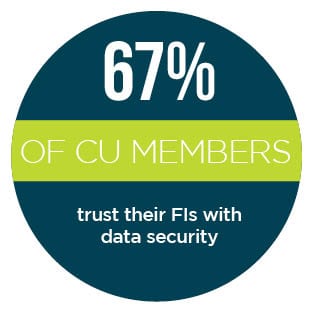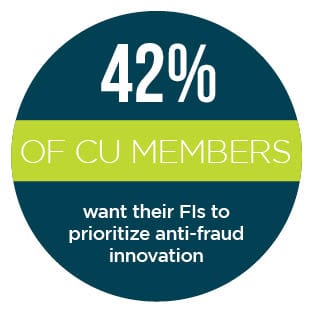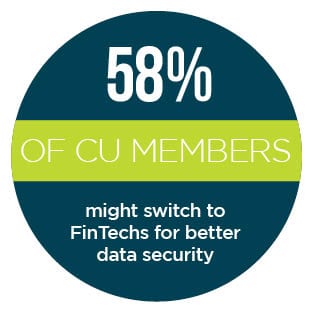
If there’s one lesson that credit union (CU) members took away from the 35-day government shutdown earlier this year, it’s that cooperative institutions have their members’ backs. During that time of considerable financial uncertainty, CUs stepped forward to help affected federal workers who were either furloughed or required to work without pay by offering services like deferred loan payments or zero-percent interest on 60-day loans.
 However, CUs offered more than financial relief and products to their members during the shutdown. Members who received lifelines while their jobs hovered in limbo were reminded of the key reason they use CUs as their financial institution (FI) of choice: trustworthiness.
However, CUs offered more than financial relief and products to their members during the shutdown. Members who received lifelines while their jobs hovered in limbo were reminded of the key reason they use CUs as their financial institution (FI) of choice: trustworthiness.
As outlined in the new Credit Union Innovation Playbook, a collaboration between PYMNTS and PSCU, trust is essential for CUs’ success. In fact, 81.3 percent of consumers indicated that trust in their FIs was the key reason they chose a particular CU as a banking partner. In addition, 80.6 percent identified trust as a reason to remain with a CU.
The inaugural edition — based on input from 3,813 consumers, 102 CU executives and 49 FinTech executives —  examines over 190 data points on how CUs pursue innovations related to data security, fraud and anti-money laundering.
examines over 190 data points on how CUs pursue innovations related to data security, fraud and anti-money laundering.
As outlined in the Playbook, data security and anti-fraud initiatives are top innovation priorities for members and CU executives. However, members and CU executives are not always aligned in terms of innovation priorities. For example, 49.1 percent of CU members pointed to loyalty and rewards as the innovation they wanted their CUs to pursue over the next three years, while 42.4 percent cited fraud protection and 33 percent cited data security as their key priorities for the same timeframe.
 CU leaders, on the other hand, placed significantly greater emphasis on data security and anti-fraud innovations than on the loyalty and rewards that members wanted. This is probably because CU leaders are more likely to pursue innovations that meet their definitions of success. In fact, 33.3 percent of CU executives measured a successful return on investment (ROI) as one that increases the revenue per member.
CU leaders, on the other hand, placed significantly greater emphasis on data security and anti-fraud innovations than on the loyalty and rewards that members wanted. This is probably because CU leaders are more likely to pursue innovations that meet their definitions of success. In fact, 33.3 percent of CU executives measured a successful return on investment (ROI) as one that increases the revenue per member.
To meet their own ROI goals and deliver on members’ preferences, CUs are turning to FinTech firms as partners in innovation. That’s because these firms can quickly deliver products to their market, and help CUs become more competitive. Yet, CUs should exercise caution when collaborating with FinTech firms, as many have expressed interest in selling their products directly to members.
Other Notable Findings in the Playbook:
About the Playbook
The Credit Union Innovation Playbook, in collaboration with PSCU, delves into the innovation agendas of players in the credit union ecosystem. Each edition of the Playbook hones in on a specific innovation focus, exploring the differences between how credit union members and leaders prioritize innovation in four select areas: risk and fraud, digital banking, data and analytics, and loyalty.